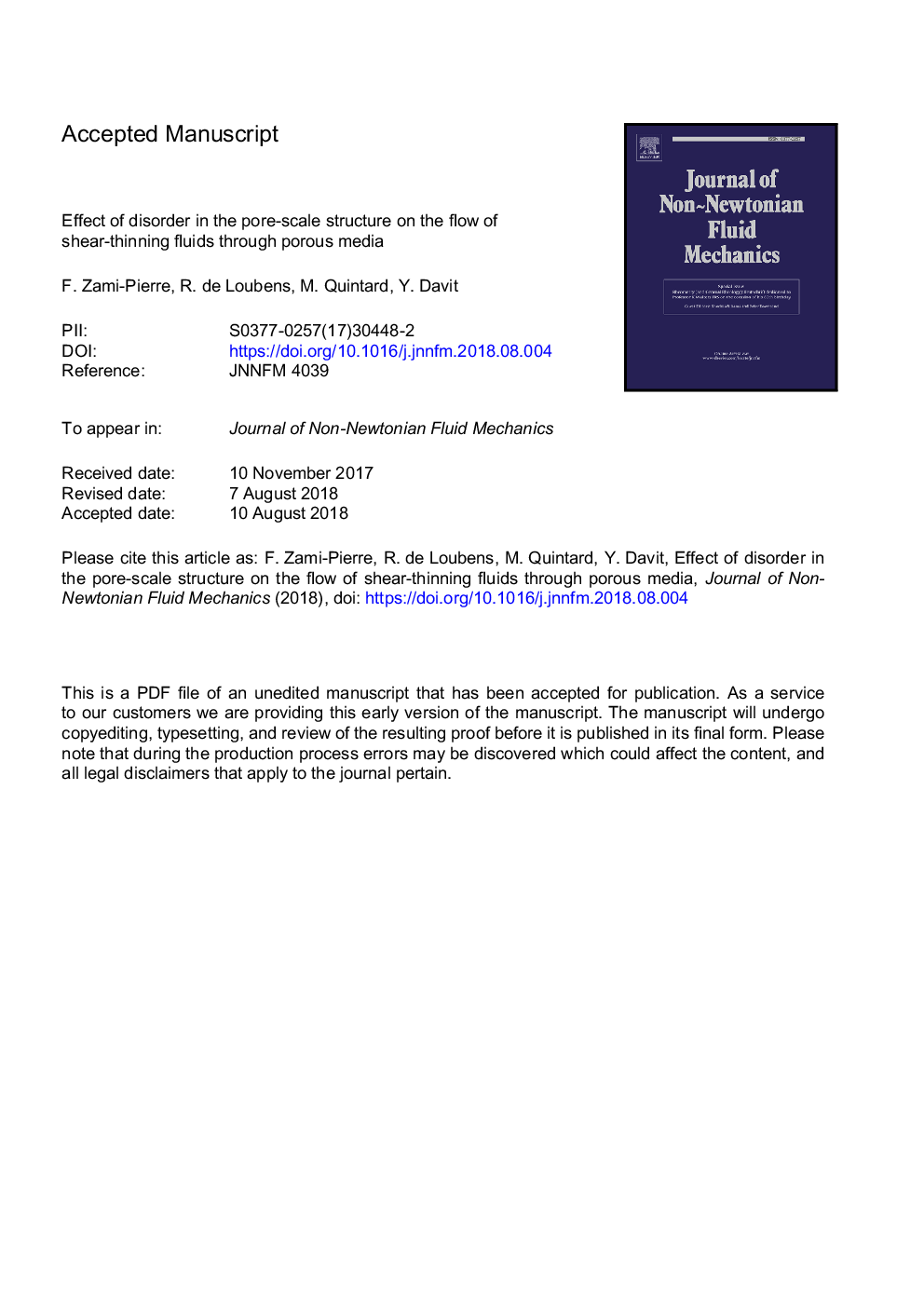| Article ID | Journal | Published Year | Pages | File Type |
|---|---|---|---|---|
| 9952635 | Journal of Non-Newtonian Fluid Mechanics | 2018 | 26 Pages |
Abstract
Modeling the flow of fluids with shear-dependent viscosity through porous media is a challenging fundamental and engineering problem. At continuum-scale, such flows are usually described using modified versions of Darcy's law, which are obtained by considering either an apparent viscosity or an apparent permeability. In the two cases, Darcy's law becomes nonlinear as the apparent viscosity or permeability both depend on the velocity or pressure gradient. The main difference between these two approaches is the impact of non-Newtonian effects on the flow direction. With the apparent viscosity, the flow direction is determined by the standard permeability tensor and unaltered by non-Newtonian effects. On the other hand, with the apparent permeability, the flow direction may be modified by non-Newtonian effects contained in the second-order tensor. Here, we ask the question of whether it is necessary to use a general tensorial correction including changes of flow direction or if the (scalar) apparent viscosity approach is sufficient. To study this, we solve numerically the non-Newtonian flow problem in a variety of isotropic porous structures for a model fluid where the viscosity depends on the shear rate following a power law with a Newtonian cut-off in the limit of low shear rates. We find that the structure of the porous medium plays a fundamental role and that there is a competition between the nonlinearity of the flow, induced by the non-Newtonian rheology, and the disorder of the porous structure. Our main result is that an apparent viscosity is sufficient in cases of sufficiently disordered porous media, as is the case of some sandstones found in petroleum engineering. Fundamentally, this suggests that the disorder in the geometry of the porous structure is mitigating part of the nonlinear effects due to the rheology.
Related Topics
Physical Sciences and Engineering
Chemical Engineering
Fluid Flow and Transfer Processes
Authors
F. Zami-Pierre, R. de Loubens, M. Quintard, Y. Davit,
